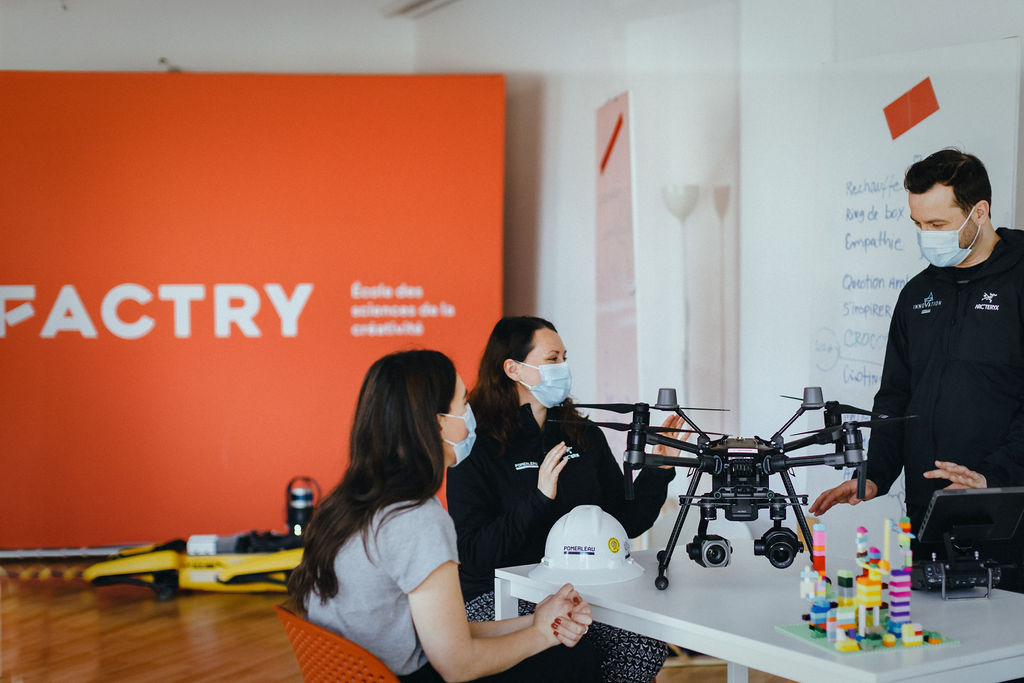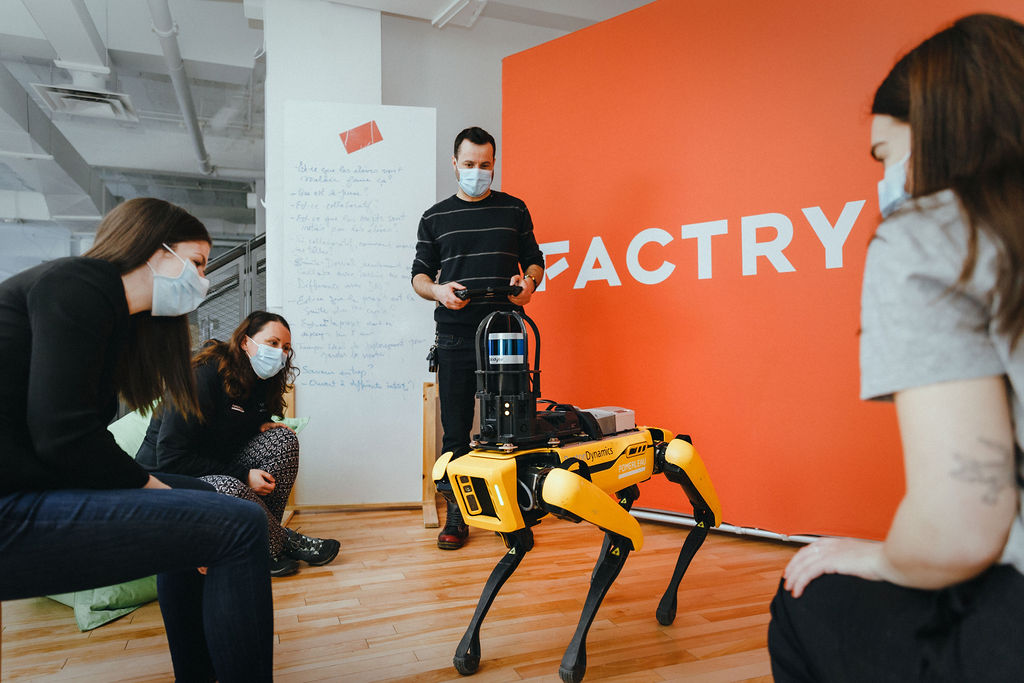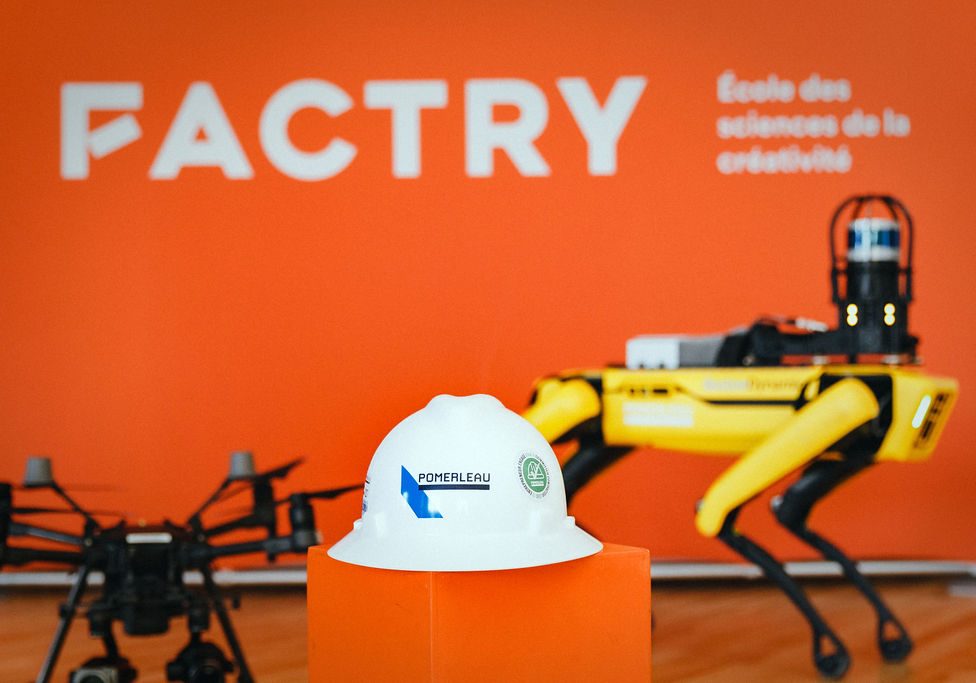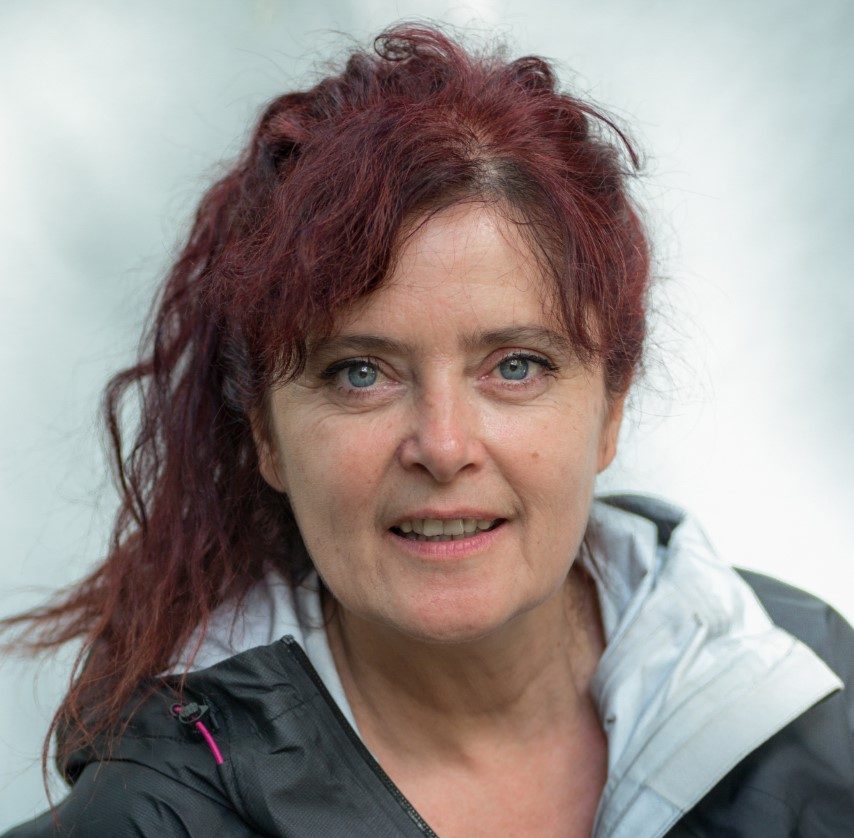True to its vocation of bringing innovation to the heart of the company, Pomerleau inaugurated its aXLab within the Factry campus in the summer of 2021. The objective: encourage employees to do things differently and build the construction sites of the future with a creative, human and interconnected approach. Interview with Carolyne Filion, Innovation Director at Pomerleau, and Hélène Godin, Creative Director at the Factry.
Please note that this article is translated from the original French version.
Where did the idea of a Pomerleau innovation lab in collaboration with Factry come from?
Carolyne Filion: We wanted to create a new kind of research and development laboratory. That’s why we set it up outside the walls of our offices, in the heart of the Innovation Square, in a space without borders that facilitates the creative process. This collaborative space allows us to test, pilot and innovate with cutting-edge technologies at the service of the people. We work together in a spirit of openness, ready to embrace change. Pomerleau’s executive vice-presidency department was already in talks with Factry; this marriage came about very naturally with the team from this school of creative sciences.
Hélène Godin: When we started Factry, we wanted to bring together different minds and establish a creative posture that would allow us to develop a new way of seeing and thinking. We wanted to create a clash of ideas and cultures around creative professions: design, architecture, the arts… This collaboration with Pomerleau is the fulfillment of a dream that was there for us from the start. We were inspired by Building 20, the radiation research lab that was temporarily built in 1943 on the Massachusetts Institute of Technology campus. By breaking down the silos, this lab created a spontaneous cross-fertilization of brains. The story goes that nine Nobel Prize winners passed through this magical incubator.
How will you propel innovation within the construction industry, deemed rather “conservative?”
F. : The construction industry has long been a traditional and conservative sector, but today, construction sites are a huge breeding ground for innovative opportunities, ready for profound changes, especially with the digital shift. The aXLab includes eight fixed workstations and a collaborative space where experts working in artificial intelligence, geomatics, robotics, virtual reality, the Internet of Things, and GIS [Geographic Information Systems] meet, depending on the project. All these professionals work together to build “empathetic” buildings where new technologies are used to improve the comfort, well-being and safety of construction workers. For example, sensors are used to measure the temperature, humidity and dust levels on a construction site.

Credit: Myriam Baril-Tessier
The robotization of work raises ethical questions. Should it be seen as a threat to human work?
F. : This question comes up often. For us, the machine must be at the service of the human, not the other way around. During a workshop with the robot-dog Spot, which involved Pausians [students in Factry’s youth program], we asked ourselves about the specificity of human transversal skills in an increasingly mechanized world: creativity, listening, collaboration, empathy, critical thinking, emotional intelligence. It was very interesting to hear the younger generations on the place that robots must take in our living environments. In this sense, the ethical awareness of the Pausians contributed a lot to this reflection, especially on how to transfer these innovations to the workers. Placing the machine at the service of repetitive and dangerous tasks is a new way of analyzing the scope of skills – both transversal and mechanical – to use robotics as a complement to human work. Robots are there to help workers rather than replace them.
G. : Wonder is also creativity. That’s what sets us apart from academic education. Are we allies of robots? What is the place of humans in this mechanized context? From these questions will emerge gestures to create a new way of developing professional skills, at the crossroads between transversal skills and technical skills.

Crédit: Myriam Baril-Tessier
Three words to summarize the aXLab’s approach?
F. : Innovation, excellence and love: everything we do, we do with passion.
G. : I would also add the word “courage”, the courage to question, to go off the beaten path, to raise difficult issues in a caring space.

